How Houston has become the most diverse place in America
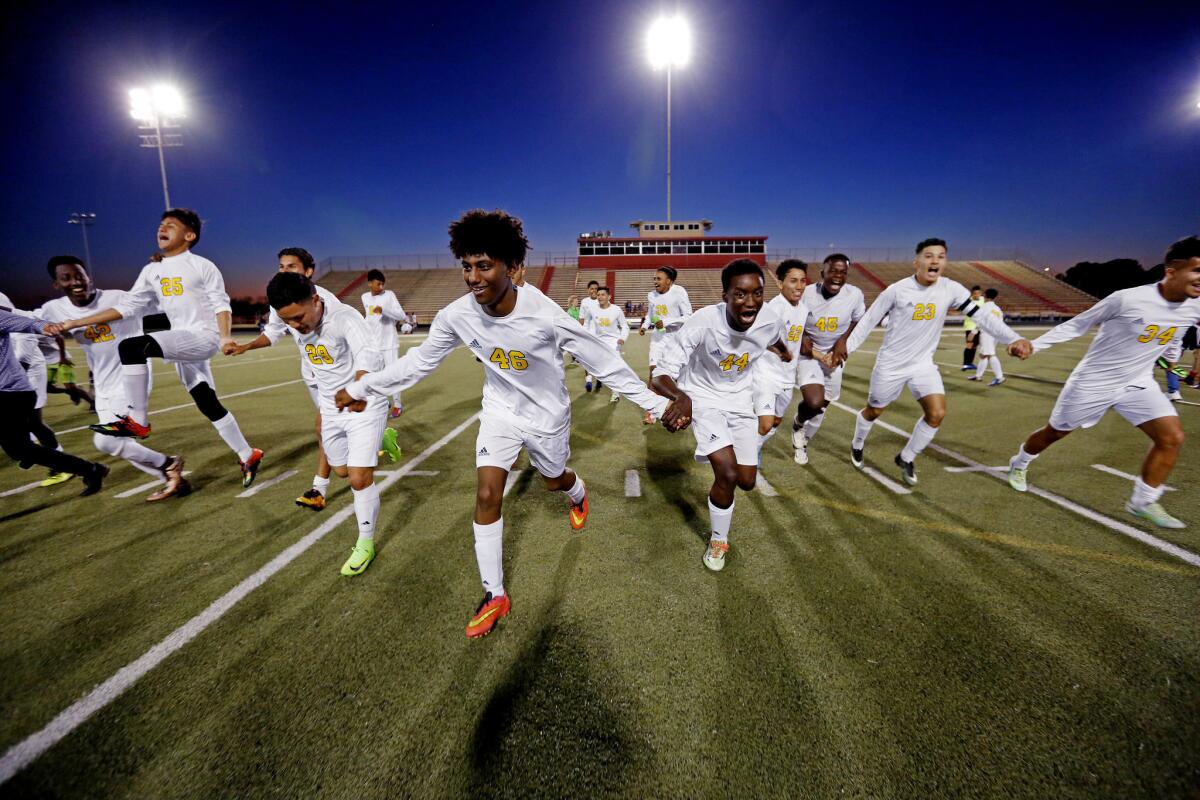
The boys sprint in white and yellow uniforms down the green turf, grunting and sweating as the coach shouts from the sidelines. “Búscalo, búscalo,” he yells in Spanish, urging the players to sprint for the ball.
“Umusitari!” comes a voice on the sidelines — run down the line — from Biganiro Espoir, a native of the Democratic Republic of Congo.
The Margaret Long Wisdom High School soccer team hails from Central America, Mexico, Africa and points between. Its bench hums with Spanish, Kinyarwanda, Swahili and often English. But its real unifying language — soccer, played hard — is universal.
The high school is in southwest Houston, a city whose stunning growth and high-volume immigration have turned it into the most racially and ethnically diverse major metropolis in the country, surpassing New York in 2010.
“It’s really surprising to see a place like this in the South, where you consider it to be racist and xenophobic,” said Michael Negussie, a Wisdom High School senior from Ethiopia. “Stereotypes of Texas don’t apply here.”
Of course in some ways they still do. Houston — with a black, Democratic mayor and a powerfully pro-immigrant population — has potentially become one of the battlefronts in Texas over the city’s “don’t ask” ‘sanctuary policy,’ which prohibits police from inquiring about the immigration status of a person who hasn’t been arrested.
Texas Gov. Greg Abbott has led an aggressive charge to end such policies, and on Sunday signed a bill to punish so-called sanctuary cities.
Under the new law, set to take effect Sept. 1, local law enforcement officers are allowed to ask people about their immigration status during a lawful detention, such as a routine traffic stop. Local entities that prohibit enforcement of immigration laws could be fined up to $25,500 a day.
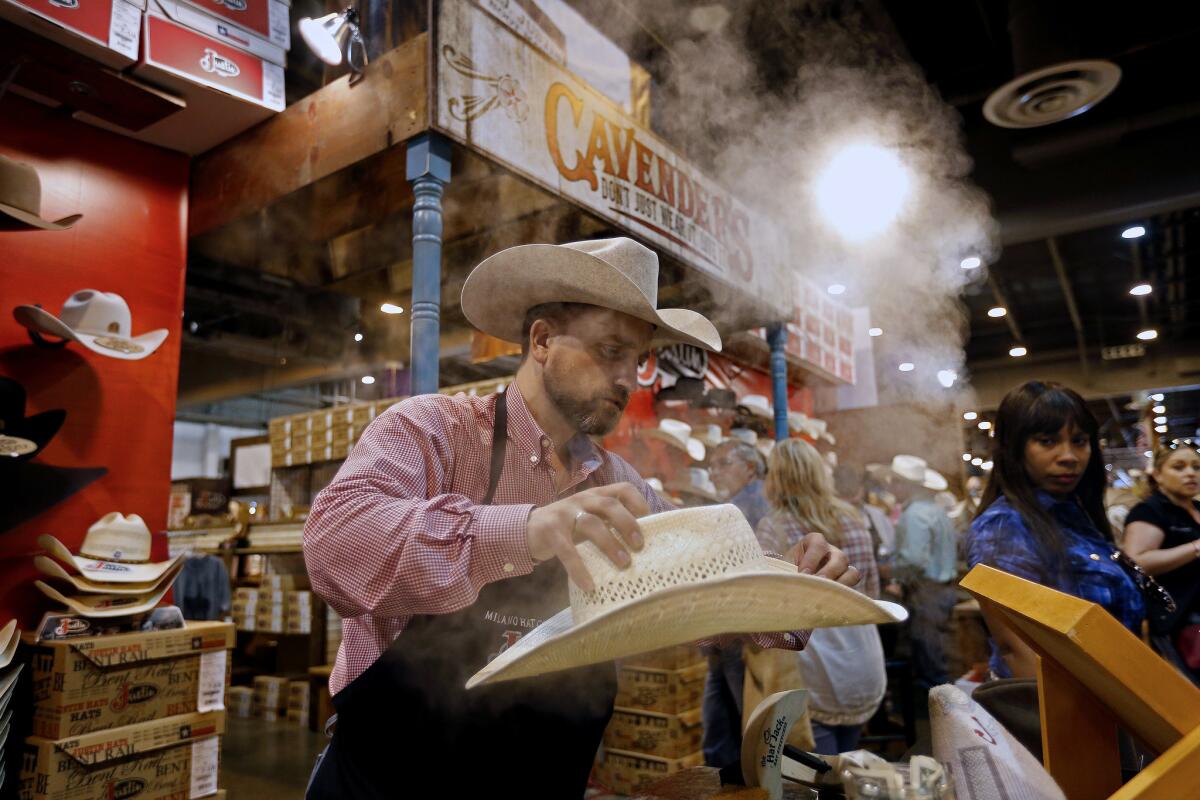
The sanctuary issue has roiled Texas, which has the country’s longest border with Mexico and an estimated 1.5 million immigrants who are in the country illegally. Much of the debate has focused on liberal islands such as Austin, where the governor has blocked $1.5 million in funding over sanctuary policies. In Houston, Mayor Sylvester Turner has balked at ordering his police officers to take on the role of
“What I’ve consistently said is that we will obey federal and state laws as long as those federal and state laws are consistent with the United States Supreme Court,” Turner said in a March interview, “and consistent with the United States Constitution.”
The story of how his city turned from a town of oil industry roughnecks and white blue-collar workers into a major political centrifuge for immigration reform, demographic analysts say, is nothing less than the story of the American city of the future.
Houston boomed through the mid-20th century, thanks to the oil bonanza, and most of those who came to get rich were white. Large numbers of Vietnamese refugees began arriving in the 1970s, and after an oil collapse in 1982, they were followed by an influx of Latinos driven by cheap housing and employment opportunities. Whites, meanwhile, started drifting out.
The multi-ethnic boom has occurred deep in the heart of a state that has often seemed to regard conservatism, and Texas identity, as an element of religion.
The state’s Republican leadership has helped lead the fight this year not only on sanctuary cities, but to defend President Trump’s order on border security and immigration enforcement. Texas went to court in 2015 to successfully block expanded deportation protections for young “Dreamers” and their parents who brought them here illegally.
Yet demographic experts say the Houston metro area, home to the third-largest population of undocumented immigrants in the country — behind New York and Los Angeles — is a roadmap to what U.S. cities will look like in the coming decades as whites learn to live as minorities in the American heartland.
Census projections have opened a window into the America of 2050, “and it’s Houston today,” said Stephen Klineberg, a sociology professor at Rice University.
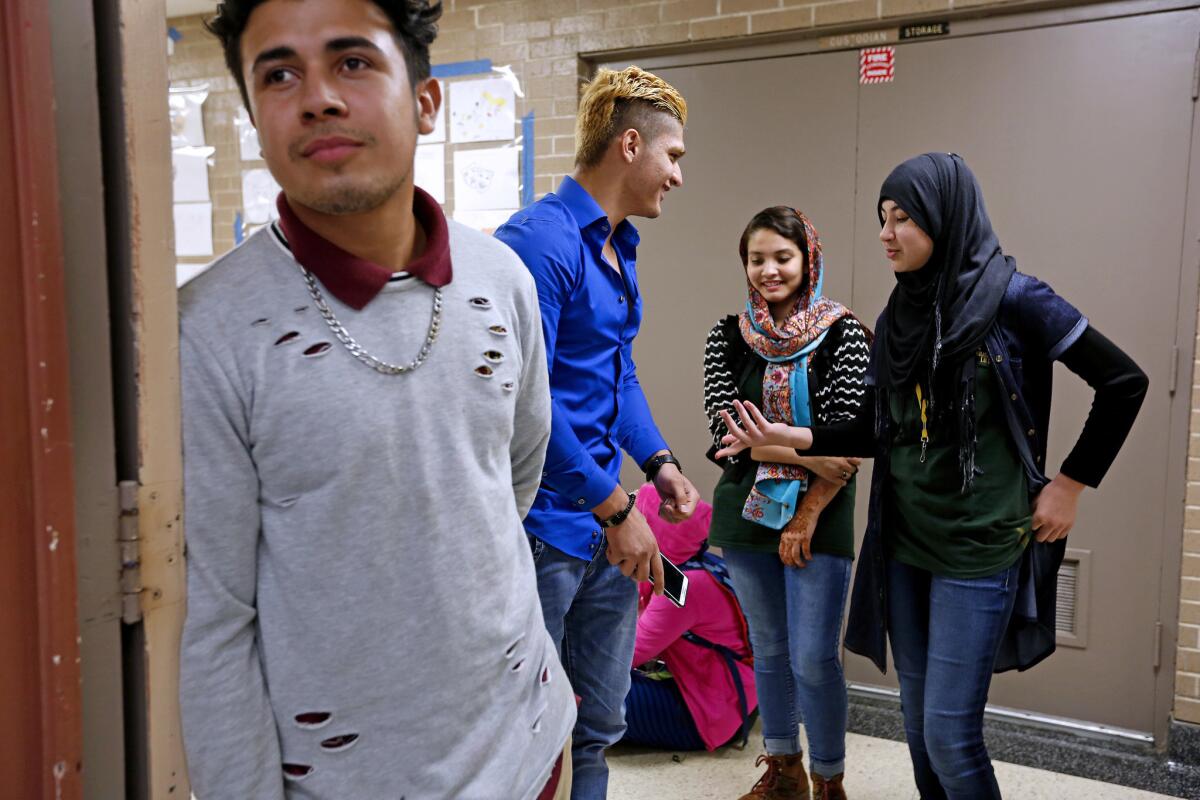
“This biracial Southern city dominated by white men throughout all of its history has become, by many measures, the single most ethnically diverse major metropolitan area in the country,” Klineberg said. “Who knew Houston would turn out to be at the forefront of what’s happening across all of America?”
One street tells the traditions of several continents.
Along Hillcroft Avenue, in the Mahatma Gandhi District, Indian restaurants share space in a plaza with Consultorio Medico Hispano — a health clinic — and Crystal Nightclub, a Latino dance club that draws an LGBTQ crowd.
Further down the street, Sweet Factory, which sells pastries from the Middle East, edges up to a store that helps immigrants ship boxes home to relatives in Guatemala, Honduras and El Salvador. Refugees from Iraq, Afghanistan and Eritrea shop at a flea market where the vendors primarily speak Spanish.
“I love Houston because we’re able to be in a place that I don’t have to be afraid of people that don’t look like me,” said Nicole Walters, an African American Houston native married to a Jamaican who was out shopping one recent afternoon for a sari to wear to a Bollywood event.
In 1970, about 62% of Houston’s population was white. By 2010, that had shrunk to 25.6%. Over the same period, the Latino population grew from 10.6% to about 44%.
Newcomers have long been part of the Houston story, a city of migrants from across the U.S. that later became a city of immigrants — and their children. From 2000 through 2013, the Houston metropolitan area’s immigrant population grew at nearly twice the national rate.
The expansion has not all happened smoothly.
Gridlock has worsened and schools have been pressed to accommodate the influx of students. Close to 70,000 students have limited proficiency in English, a situation that has angered some longtime residents.
“The whole idea of having bilingual teachers and specific programs just to address those folks I think is overwhelmingly tilted in the wrong direction,” said Sam Herrera, outreach director of Stop the Magnet, a local political action committee that supports deportation of those in the country illegally. “Folks need to come here, they need to assimilate and they need to learn the language.”
Yet not all of the city’s changing demography, or even most of it, is a result of newcomers. Today, most of the city’s Latino growth springs from children born to immigrants who arrived two or three decades ago.
And it’s only going to become more pronounced. In Harris County, of which Houston is the county seat, 51% of all those under the age of 20 are Latinos, and 19% are African American.
What that means is a whole new dynamic, in which minorities are no longer seen as outsiders. “Suddenly these are 100% American kids, and they’re falling in love with each other, making multiracial babies,” Klineberg said.
A “psychology of inevitability” begins to set in around immigration, he said — it’s happening, and it might not be a bad thing.
“Maybe it’s going to position Houston … for success in building the connections to the global marketplace. Maybe I can make money off of this.... And then we begin to say, how do we make this work?”
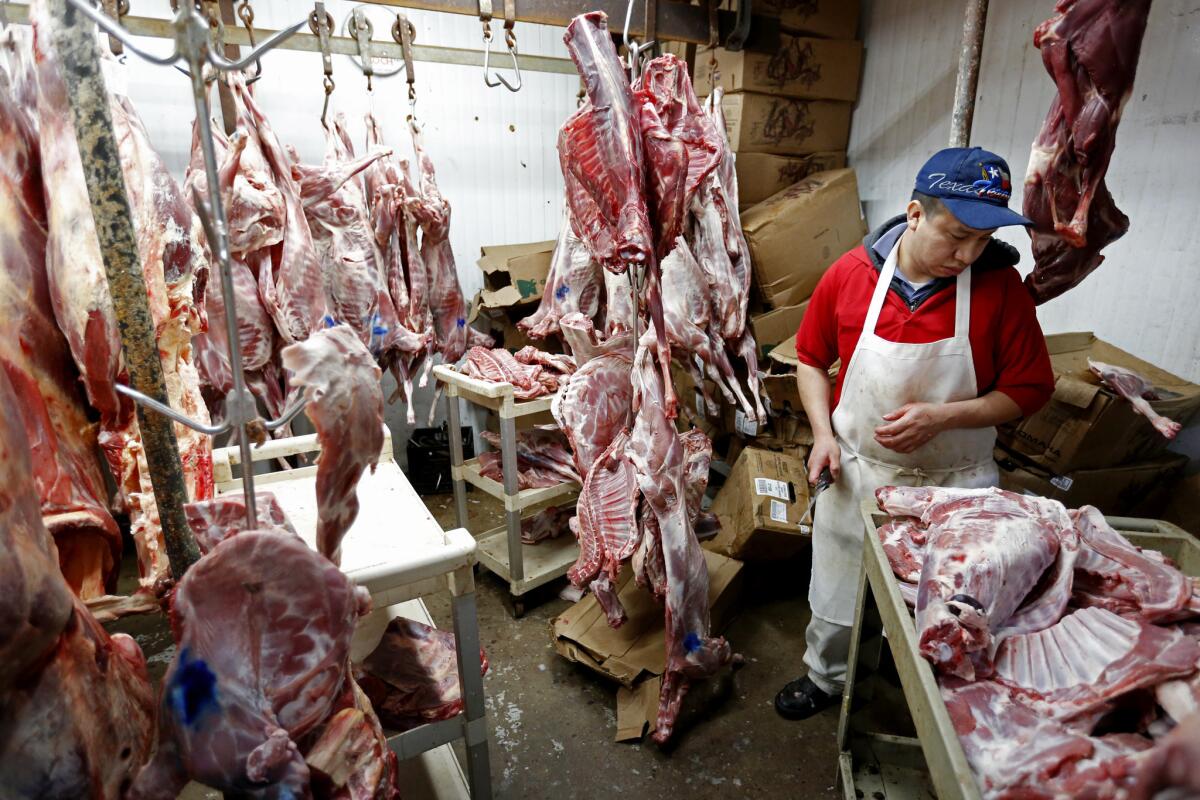
Turner’s face smiles down from posters across the city that feature the word “welcome” in 32 languages.
After the legislature approved the bill banning sanctuary cities, Turner said the city is determined to follow the law, but the courts are likely to make the final determination of whether it’s constitutional.
“What I can only say, again, is that we are a welcoming city, we have always been. We are not ICE. I do not want the Houston Police Department to be ICE. We are not going to profile, we are not going to do that. We will act in accordance with the United States Constitution and with the Supreme Court -- if they say it's OK, we're OK."
When the Trump administration threatened to withhold federal funding to cities that don’t cooperate in enforcing immigration laws, the mayor had a quick response:
“I know there are a lot of families and children who are afraid and worried right now about what might happen to them. I want them to know that Houston is, and always has been, a welcoming city, where we value and appreciate diversity,” Turner said in a statement. “HPD is not the Immigration and Naturalization Service. We don’t profile, and we are not going to start profiling people to determine whether they are here illegally.”
He admits his words may buck the prevailing headwinds in a state where authorities made it difficult for immigrants in the country illegally to get birth certificates for their U.S.-born children.
“Do we find ways to get along? Yeah. Do we disagree in our philosophy? Yeah,” Turner said. “But we live in a very changing, fluid, dynamic society and Texas is no different.”
::
In the lunchroom at Wisdom High School, classmates gossip in rapid-fire Spanish and joke in Amharic, then settle in at lunch tables with English as their common language.
The school is a mash-up of people, with a range of traditions. Forty-six percent of the student body is made up of recent immigrants.
Danelis Borrego, who came to the U.S. from Cuba in 2011, sits with a group of classmates who are trying to raise money for their senior class. On her left is Hamza Khan, whose father is south Asian, and across the table sits Miron Gelmesa, from Ethiopia.
“Anchi konjo nesh,” Borrego tries hesitantly in Amharic, the language spoken in Ethiopia. They are lyrics she learned from “Baba,” a song by Aminé, an Ethiopian American rapper. The boy she’s been dating for a few months is originally from Ethiopia.
“If you’re in Houston, you’re more likely not to date someone that is from your same ethnicity,” Borrego said.
At another table, Sabawoon Abdulrahimzai sat with boys from Uganda, Ethiopia, Tanzania and Congo. Abdulrahimzai, who came from Afghanistan two years ago, only communicates with his lunch companions in English. He speaks Pashto, Dari and Persian, while his friends speak French, Swahili and Kinyarwanda.
Abdulrahimzai said he sometimes uses a translator to speak with his girlfriend, who communicates mainly in Spanish.
“She understands a little bit of English, but not well,” he said. And he understands a little bit of Spanish, but not much.
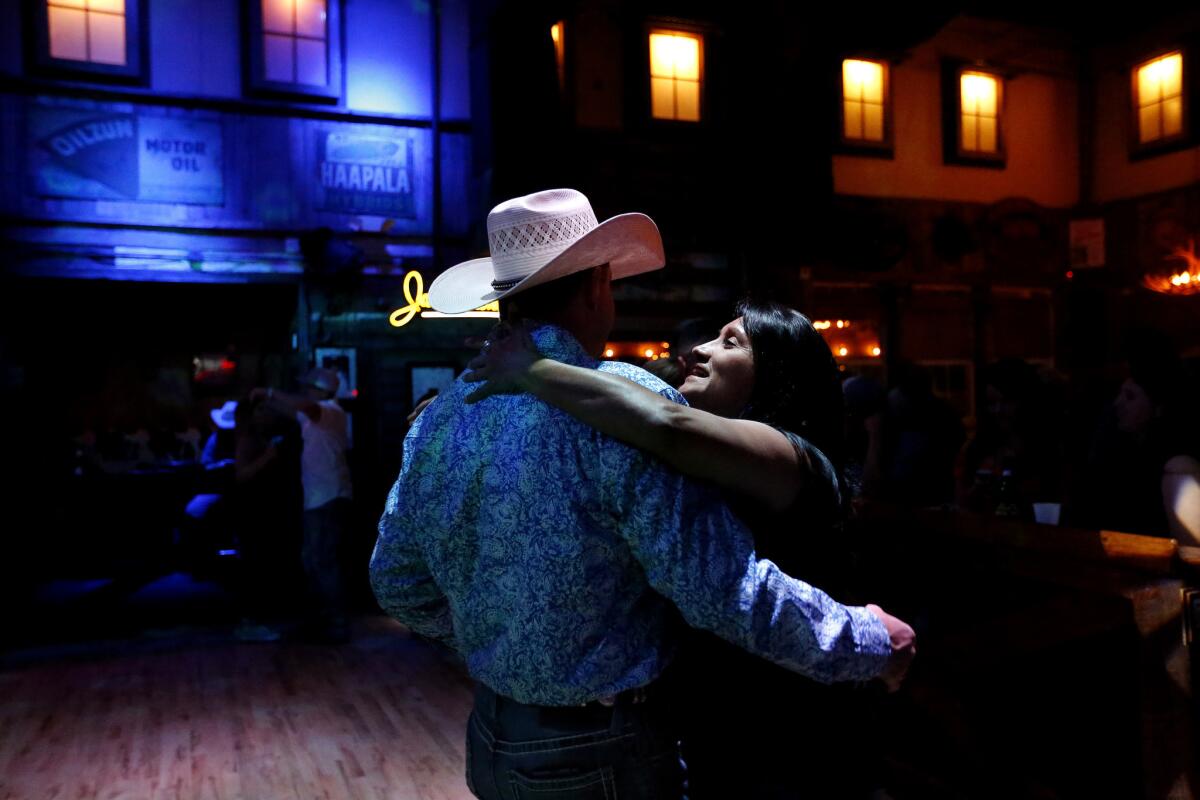
Segregation is a fact of life across Texas, and in Harris County, white, black and Latino neighborhoods are still in some cases divided by major highways and rail lines, the Houston Chronicle concluded in 2015.
Yet the number of affluent white neighborhoods set off by themselves is far fewer than the number found in Los Angeles, according to research from the Center for Urban and Regional Affairs at the University of Minnesota.
Diversity has swept across the city — into the rodeo, where mixed-race couples bring their children decked out in boots and cowboy hats, and even into the classic cowboy bars.
A bouncer wearing a cowboy hat and boots checked IDs one recent evening at Whiskey River, a dance hall and saloon 25 miles northwest of downtown. Employees were wearing shirts that read, “God save the cowboy,” while patrons danced under a disco ball and chandelier made of Bud Platinum bottles.
Dee Dee Jozwiak, who is a full-blooded Comanche, spun around the dance floor with Jaylon Jacobsen, the tip of his cowboy hat occasionally bumping her forehead.
“How funny is it that I’m an Indian and he’s a cowboy?” Jozwiak said with a laugh.
Ashley Battle downed a shot of Fireball whiskey after dancing the Cupid Shuffle.
“I honestly feel like I live in a bubble, because Houston is so diverse,” said Battle, who is black. Before her family visited, she said, they thought of Houston as “some hick town, cowboys, cows everywhere.”
That may be true in some of the rest of Texas, she’s learned, but when she ventures into the rest of the state, she takes a bit of Houston with her.
“I go wave and smile and say hi to everyone,” she said. “Because that’s just how we do here.”
[email protected], Twitter: @gary_coronado
Times staff writer Sandra Poindexter contributed to this report.
On Twitter, follow @brittny_mejia
ALSO
Texas announces lawsuit against local officials considered hostile toward 'sanctuary cities' ban
What's at stake as Trump gets to 'see you in court' in two major travel ban cases
Sign up for Essential California
The most important California stories and recommendations in your inbox every morning.
You may occasionally receive promotional content from the Los Angeles Times.







